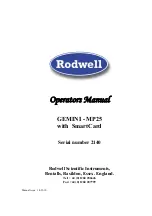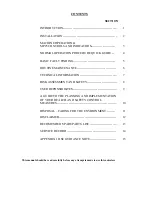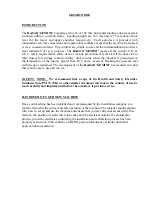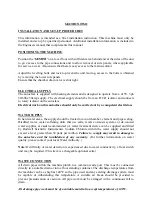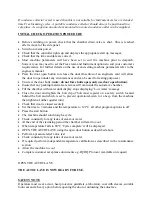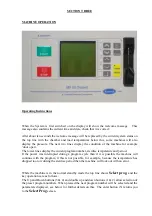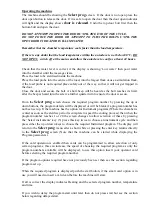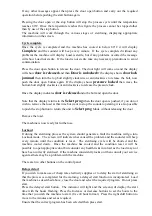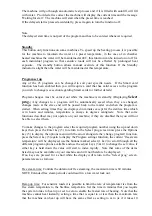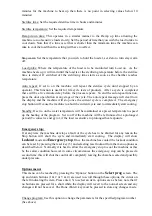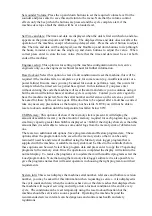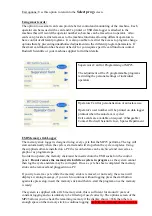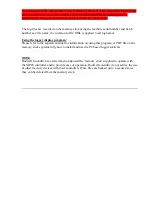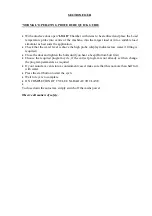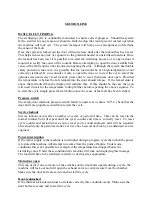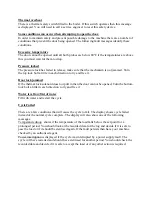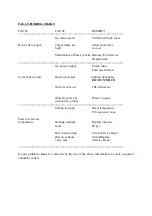
SECTION TWO
INSTALLATION AND SET-UP PROCEDURES
This information is intended as a brief installation instruction. This machine must only be
installed and set up by qualified personnel. Additional installation information is included in
the Engineers manual that complements this manual
POSITIONING THE MACHINE
Position the
‘GEMINI’
on a level floor with sufficient area behind and at the sides of the unit
to give access to the pipe connections and to allow removal of side panels, where applicable
for service access. Also ensure that there is easy access to the mains isolator
Adjust the levelling bolts and lock to prevent the unit moving, access to the bolts is obtained
by removing the lower side panels
Ensure that the chamber drain valve is shut tight.
ELECTRICAL SUPPLY
The autoclave is supplied with heating elements and is designed to operate from a 415V. 3ph
50/60hz 30amp supply. The electrical supply should be from an R.C.D isolator and connects
to rotary isolator on the autoclave.
Electrical work on this autoclave should only be carried out by a competent electrician.
WATER SUPPLY
In hard water areas, the supply should be treated to avoid chamber, element and pipe scaling.
Distilled water, water softening units that use salts, reverse osmosis systems or de-ionised
water supplies, are
not
recommended. (A water treatment device can be supplied and fitted
by Rodwell Scientific Instruments). Sodium Chloride within the water supply should not
exceed a level greater than 30 parts per million.
Failure to comply may result in damage to
the autoclave and the invalidation of any warranty.
(For further information on water
quality, please contact your local Water Authority.)
Note:
If difficulty of water detection is experienced due to water conductivity, a float switch
unit may be required. (This item is a chargeable optional extra).
WASTE CONNECTION
All drain pipes within the machine plumb to a common waste port. This must be connected
directly to a suitable drain or into a floor standing container. The discharge temperatures from
the machine can be as high as 140ºC so the pipe used and any existing drainage system must
be capable of withstanding this temperature. A suitable air break should be provided to
prevent pressurisation or vacuum. All pipe work must be arranged with a continuous fall to
drain.
All drainage pipe work must be of a suitable material to accept temperatures of 140ºC.

